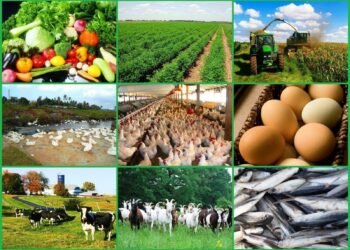The recent spillage from the Akosombo and Kpong dams has left a devastating impact on local agriculture, resulting in an estimated loss of GH¢1.6 billion in agricultural livelihoods.
Stephen Frimpong, a Consultant at the Food and Agriculture Organisation (FAO) of the United Nations, revealed this staggering figure, emphasizing the significant economic repercussions of the disaster.
The spillage, which occurred in September and October last year, affected eight districts across the Greater Accra, Eastern, and Volta regions, displacing approximately 48,000 people. The FAO, in collaboration with the National Disaster Management Organisation (NADMO) and other agencies, has been actively engaged in assessing the direct damages to agriculture livelihoods and formulating response and rehabilitation plans for the affected communities.
Data collected from 117 out of 184 affected communities by NADMO, the Ministry of Food and Agriculture (MoFA), and other officials last month provided crucial insights into the impact of the floods. The assessment utilized the “FAO Methodology for Damage and Loss in Agriculture Assessment” tool, enabling a comprehensive evaluation of the extent of the damage.
Mr. Frimpong underscored the recurring nature of dam spillages and their detrimental effects on agriculture livelihoods, particularly in the context of climate change. He noted that Ghana is likely to experience more frequent floods in the future, necessitating proactive measures to mitigate their impact.
Highlighting the global scale of the issue, Mr. Frimpong mentioned that floods, exacerbated by climate change, affect an estimated 96% of the global population annually, resulting in significant damages to infrastructure and livelihoods amounting to $13.7 billion.
Imperative of Data-Informed Recovery Efforts
Mr Benjamin Adjei, the Assistant FAO Representative in Ghana and Head of Programmes, emphasized the imperative of data-informed recovery efforts. He stressed that rehabilitation and recovery initiatives must be guided by accurate data to determine the extent of the damage and allocate resources effectively.
“Indeed, in times like this, the victims need us and the best we can do to understand their sufferings better and needs is by listening to them through these assessments, the results of the findings which we are here to review and better contextualised.
“Here, we are looking at direct impact to agricultural livelihoods related to crops, livestock, forestry, fisheries and aquaculture. It is in light of this – working together with all of you – this workshop provides us the platform to brainstorm on the assessment of the impact of the floods on the agricultural livelihoods and what can be done or how best to shape what is being done currently.”
Mr Benjamin Adjei
Mr Benjamin Adjei concluded by thanking all districts, staff, NADMO and Department of Agriculture for making available their expertise, time and ecological knowledge of the communities affected in support of the data collection in March of this year. “Your supports to this exercise tremendously helped to better understand the impact of the floods on agricultural livelihoods,” he said.
The FAO Consultant made this known at an expert review recovery and rehabilitation planning workshop at Sogakope in the Volta Region. Officials of the FAO, Ministry of Food and Agriculture (MoFA), district directors of the MoFA, officials of NADMO and Ghana Statistical Service participated in the workshop.
The workshop was organised to appraise the impact of the floods on agriculture and direct agriculture livelihoods in the downstream communities of eight districts- Ada East, Lower Manya, Asuogyaman, North Tongu, Central Tongu, South Tongu, Shai Osu Doku and Anloga following the spillage.
The spillage caused direct damages to crops, livestock, forestry, aquaculture and fisheries of the people in the downstream communities.























